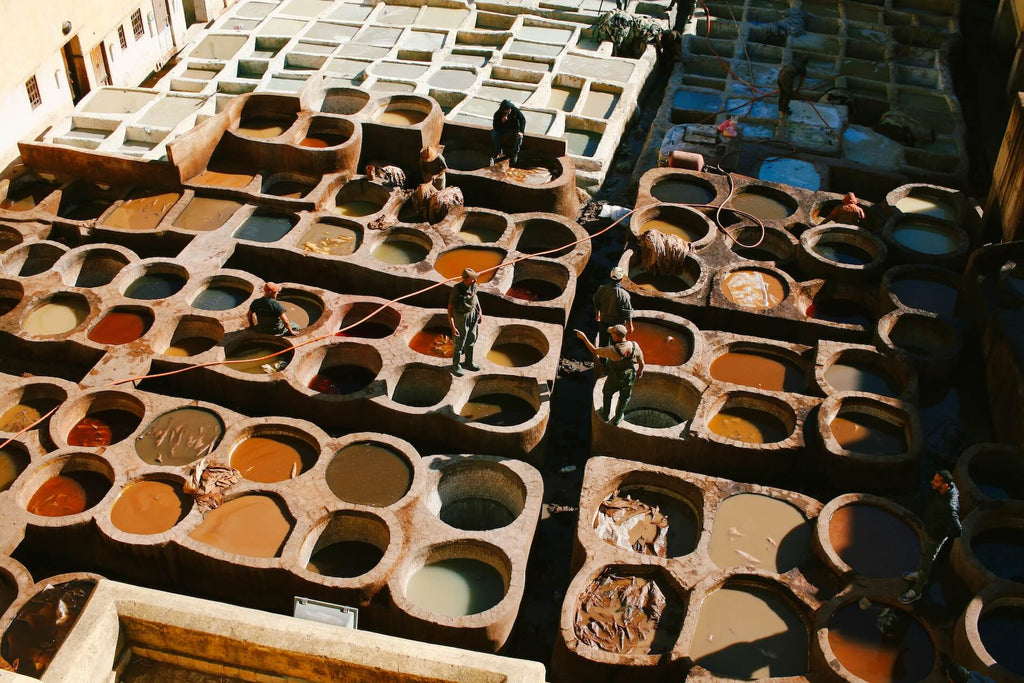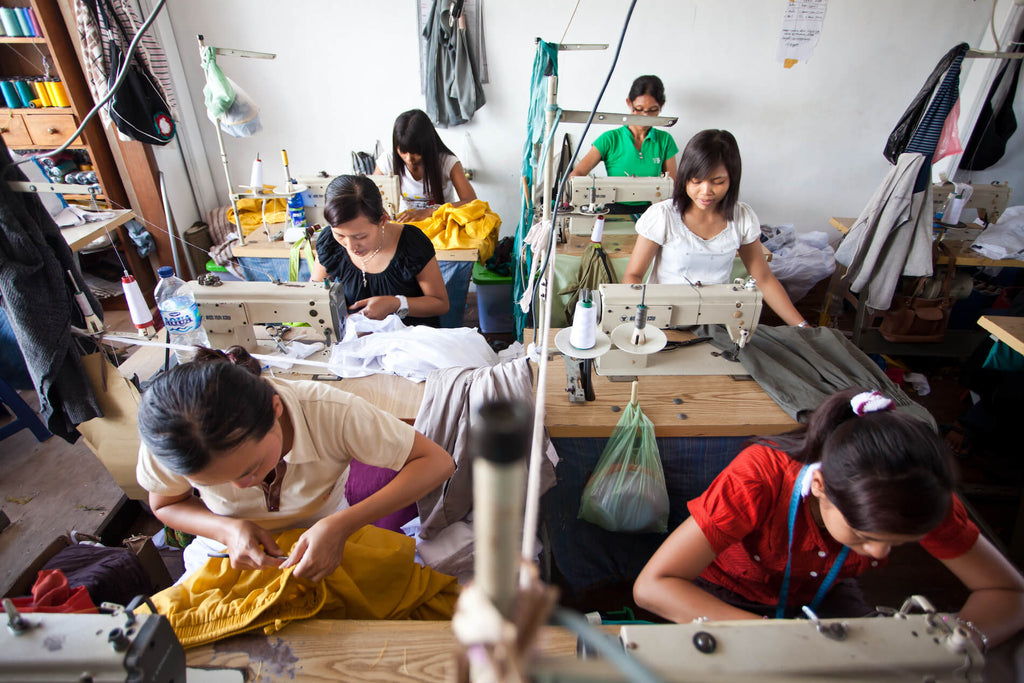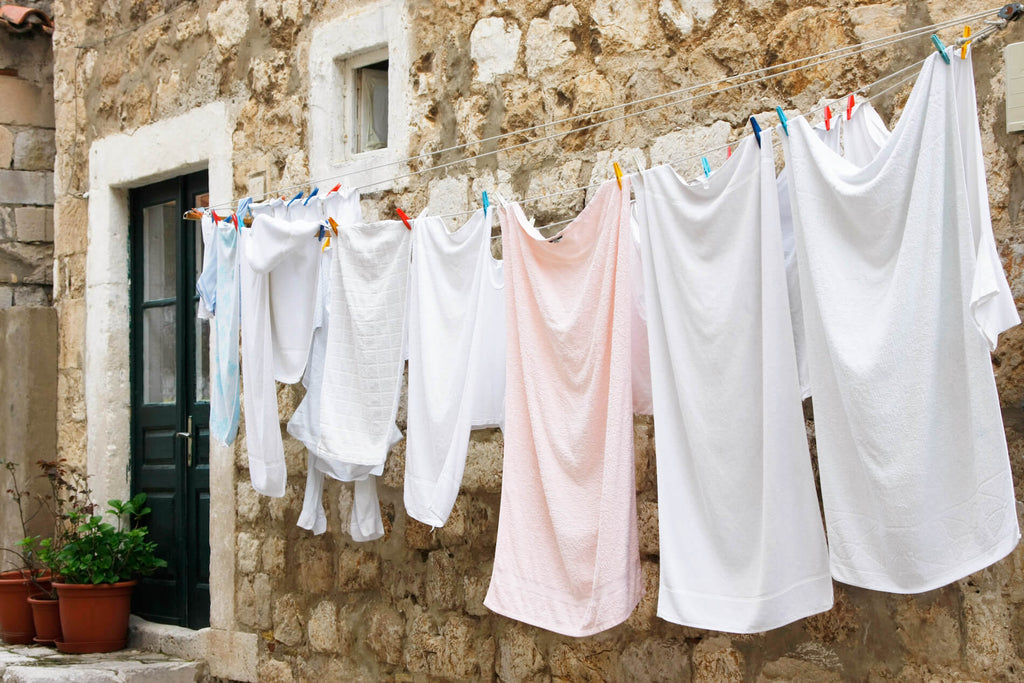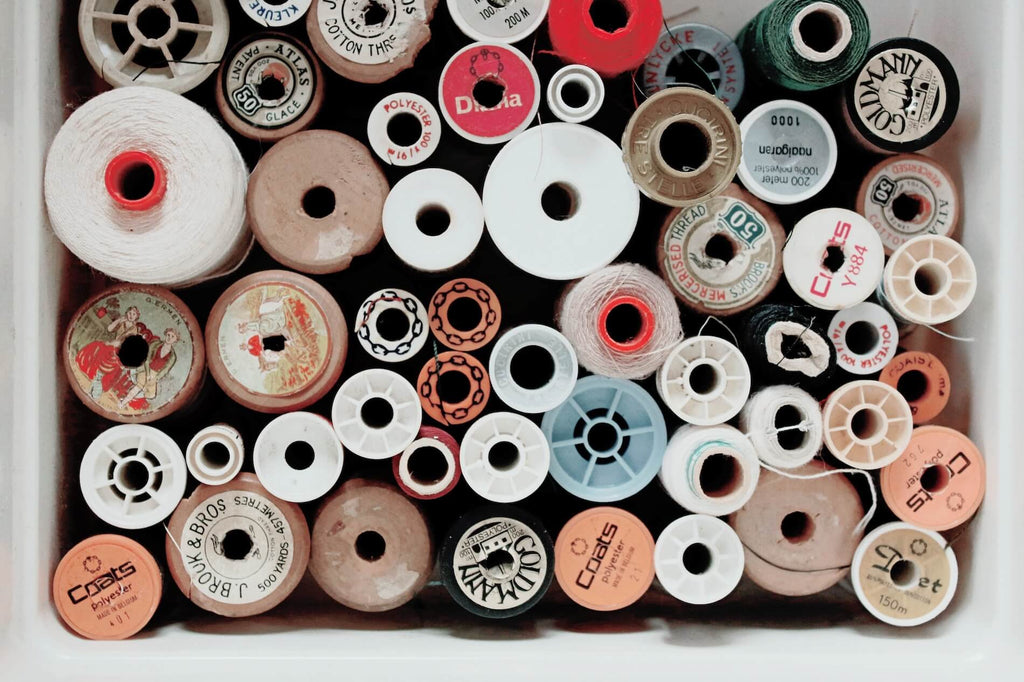Table of Contents
- Why is sustainable fashion so hard?
- The Impact of Fabric Type on Sustainability
- The Role of Manufacturing
- The Fashion Industry's Carbon Footprint From Transportation and Retail
- The Journey of a Garment: Transportation's Carbon Footprint
- The Unsustainable Reality of Fashion Retail
- Towards a More Sustainable Future
- Beyond Purchase: The Environmental Impact of Clothing Care
- The Energy Cost of Laundry
- The Microplastic Problem
- The Role of Laundry Products
- Towards More Sustainable Clothing Care
- The Environmental Impact of Textile Waste
- The Scale of the Problem
- Environmental Consequences of Textile Waste
- Towards a Solution: Reducing Textile Waste
- The Road to Circularity: Challenges in Adopting a Circular Model in the Clothing Industry
- Challenge 1: Complex Supply Chains
- Challenge 2: Material Mixes
- Challenge 3: Fast Fashion Mentality
- Challenge 4: Lack of Infrastructure and Technology
- Challenge 5: Consumer Behavior
- Overcoming the Challenges
- How To Implement Sustainable Fashion
Why is sustainable fashion so hard?
Why aren't more clothing companies adopting a circular model? Let's dive into this complex issue.
Sustainable fashion, at its core, is a complex concept. It's not merely about the tangible end-product that hangs in our wardrobes; it encapsulates an intricate web of elements stretching across the entire lifecycle of a garment. This journey traverses various stages - from raw material sourcing and production to distribution, consumer usage, potential reuse, and eventual disposal. Let's delve into why sustainable fashion is such a multi-faceted phenomenon.
Sustainable fashion extends beyond purchasing 'greener' products; it represents a call for systemic change. This change involves buying less, opting for second-hand items, extending the lifespan of our existing wardrobe, and responsibly disposing of unwanted clothes. It also entails supporting brands prioritizing ethical labor practices, reducing environmental impacts, and embracing circular principles.
In essence, the complexity of sustainable fashion lies in its demand for a profound shift in our relationship with clothing. It requires us to reassess every aspect - from creation and acquisition to usage and disposal. Sustainable fashion isn't just a trend; it's a lifestyle transformation towards a more conscious and mindful future.
The Impact of Fabric Type on Sustainability
In the era of conscious consumerism, there is a growing awareness about the environmental impact of our clothing choices. The fashion industry has historically been one of the largest polluters in the world. However, as we move towards more sustainable practices, one crucial aspect to consider is the source of our fabrics. The type of fabric used in clothing can significantly impact its eco-friendliness.
The environmental footprint of a garment starts with the raw materials. For instance, despite its natural origins, cotton demands substantial water resources and pesticides for cultivation. On the other hand, synthetic fibers like polyester, born from petroleum, are long-lasting and low-maintenance but shed harmful microplastics during washing. Let's dive deeper into the complexities of material choice and sustainability.

Natural vs Synthetic Fabrics
Fabrics typically fall into two broad categories: natural and synthetic. Natural materials like cotton, silk, wool, and linen come from plants or animals. On the other hand, synthetic fabrics such as polyester, nylon, and acrylic are made from petroleum.
While it might seem that natural fabrics would automatically be more eco-friendly, this isn't always the case. For instance, cotton farming uses a significant amount of water and pesticides.
While durable and easy to care for, synthetic fabrics have their own environmental issues. They are derived from non-renewable resources, and their production releases harmful emissions. Plus, they shed microplastics during washing, contributing to ocean pollution.
Organic Fabrics
An alternative to conventional natural fabrics is organic natural fabrics. Organic cotton, for example, is grown without harmful pesticides, is more durable, and is better for your skin than conventional cotton. You would think that organic fibers are better than non-organic natural fibers, but it's not that simple. There is a tendency for the sustainable fashion movement to trust that something is better for the environment just because it's organic. Some of the pros of organic cotton come with significant downsides, like much more land required for growing (and therefore more water), which can lead to the destruction of ecosystems and deforestation.
Regenerated Fabrics
Regenerated or semi-synthetic fabrics like lyocell, modal, and viscose can be another sustainable option. They are made from plant materials but processed using chemicals. Whether semi-synthetic fabrics are sustainable depends on the raw materials used to make the fabric and whether the chemicals are recycled in a closed-loop system. Among these, lyocell is often considered the most eco-friendly due to its closed-loop production process, which reuses solvents. A popular semi-synthetic lyocell fabric you've probably heard of is TENCEL (which is produced by Lenzing.)
Recycled Fabrics
Recycled fabrics, made from post-consumer or post-industrial waste, are an exciting development in sustainable fashion. Recycled cotton, wool, and even polyester are becoming more common. These fabrics reduce waste and resource use, making them a promising solution for eco-friendly clothing. While there has been a lot of progress in chemical recycling technology, no company has been able to recycle every fabric type or in commercially viable amounts.
The Role of Manufacturing
The journey of a garment, from raw material to the final product, is a complex process with significant environmental and social implications. As we strive towards a more sustainable and ethical clothing production, understanding the impact of manufacturing processes is crucial.
The transformation of raw materials into clothes can be resource-intensive and laden with pollution. Factors to consider include:
- Energy consumption
- Water usage
- Chemical waste from dyeing and finishing procedures
- The working conditions within factories
Clothing manufacturing involves several stages, each with its environmental impact. Two of the most polluting steps are dyeing and tanning. Let's dive into how these processes affect sustainability pollution and the treatment of workers.

The Dyeing Process
Dyeing is a common process in the textile industry, used to add color to fabrics. Conventional dyeing methods often involve hazardous chemicals, which can be harmful to both the environment and human health. These chemicals often end up in waterways, causing severe water pollution. Additionally, dyeing processes are water-intensive, exacerbating water scarcity in certain regions.
The Tanning Process
Leather goods undergo a tanning process to convert raw hides into durable material. Traditional tanning methods use chromium salts, which pose serious environmental and health risks. Chromium pollution can contaminate water and soil, and prolonged exposure can cause health problems in workers.
The Human Cost: Workers' Rights and Treatment
The clothing manufacturing process isn't just about environmental sustainability but also about ethical considerations, particularly regarding workers' rights and treatment. The fashion industry is notorious for poor working conditions, including low wages, long hours, and unsafe environments.
Child and forced labor are also prevalent in some parts of the industry. An estimated 170 million children are subjected to child labor worldwide, with a significant number involved in the fashion supply chain.

The Fashion Industry's Carbon Footprint From Transportation and Retail
When we think about sustainability in fashion, our minds often leap to fabric sourcing or manufacturing processes. However, transportation and retail are two crucial stages of a garment's life cycle that significantly affect its environmental footprint. The journey of clothing from factories to stores contributes to carbon emissions. Moreover, the retail model of numerous fast-fashion brands promotes overproduction and fosters a culture of excessive consumption4.
The Journey of a Garment: Transportation's Carbon Footprint
The fashion industry is a global enterprise. Raw materials might be sourced from one part of the world, processed in another, assembled into garments elsewhere, and then shipped worldwide to reach consumers.
Each stage of this journey involves transportation, and each mode of transportation - be it by truck, ship, or plane - emits greenhouse gases. Air freight, in particular, has a high carbon footprint. Learn more about the importance of freight on supply chain sustainability.
Moreover, the rise of online shopping and fast fashion has increased express deliveries and returns, further exacerbating the carbon emissions from transportation.
The Unsustainable Reality of Fashion Retail
Traditional brick-and-mortar retail stores also contribute to the fashion industry's environmental footprint. These contributions to the business's environmental footprint are often focused on less but still make a significant impact. Here are some examples of the hidden emission sources due to retail:
- Building and Storage: Retail stores require energy for lighting, heating, and cooling. Many stores also use single-use packaging materials to store products, contributing to waste.
- Unsold Inventory: The retail space also often involves significant waste due to unsold inventory. Each year, billions of dollars worth of clothing ends up in landfills or is burned, representing not only a waste of resources but also a source of pollution.
- Commutes: Aside from these sources of emissions, there are emissions that are associated with commutes for workers that often go overlooked.
Towards a More Sustainable Future
Reducing the environmental impact of transportation and retail in the fashion industry requires concerted efforts at various levels.
Optimizing logistics, reducing air freight, and transitioning to low-carbon or carbon-neutral modes of transport can help reduce carbon emissions.
In retail, implementing energy-efficient practices, reducing packaging waste, and managing inventory more effectively can mitigate environmental impact. Encouraging second-hand sales and recycling can also help deal with the issue of unsold inventory.
The fashion industry's carbon footprint extends far beyond the production of garments. As consumers, understanding the environmental impact of transportation and retail helps us make more sustainable choices. By supporting brands that prioritize sustainability at every stage of their supply chain, we can contribute to a more sustainable and responsible fashion industry.
Beyond Purchase: The Environmental Impact of Clothing Care
When discussing fashion's environmental footprint, we often focus on the production process: the sourcing of materials, manufacturing, transportation, and retail. However, the environmental impact of clothing continues once it's in our wardrobes. How we care for our clothes - washing, drying, and maintaining them - has significant ecological implications.
The environmental impact of clothing doesn't cease after purchase. Processes such as washing, drying, and ironing consume energy and water, potentially facilitating further microplastic release.
The Energy Cost of Laundry
One of the primary environmental impacts of clothing care comes from laundry. Washing machines and dryers consume substantial amounts of energy and water. In fact, according to the EPA, the average person in the U.S. uses 15 gallons of water per day for just clothes washing (that's nearly 5,500 gallons of water a year!)
Furthermore, many people wash their clothes more frequently than necessary. Each wash not only uses resources but also contributes to wear and tear, reducing the lifespan of garments.
The Microplastic Problem
Another critical issue is the release of microplastics during wash cycles. When washed, synthetic fabrics like polyester, nylon, and acrylic shed tiny plastic fibers. These microplastics are too small to be filtered out by wastewater treatment plants and end up in our oceans, threatening marine life and entering the food chain. It's not just a threat to marine life. The average person consumes 74,000 microscopic plastic particles a year through breathing or food consumption.
The Role of Laundry Products
Laundry products like detergents and fabric softeners can also have negative environmental impacts. Many conventional laundry products contain harmful chemicals that can pollute waterways.
Fabric softeners, in particular, can coat fibers and accelerate wear, shortening the life of a garment. Aside from that, regular use of fabric softener creates build-up in your washing machine and dryer, resulting in a loss of efficiency and costly repairs. Fabric softeners come as liquids used during the wash cycle or heat-activated dryer sheets. They are intended to reduce static, get rid of wrinkles, and improve the smell of your clothes. Luckily, many natural alternatives are better for you, the environment, and your clothes!

Towards More Sustainable Clothing Care
So, how can we mitigate the environmental impact of clothing care? Here are a few strategies:
- Wash less: Consider if a garment really needs washing or if it could be aired out or spot-cleaned.
- Wash cool: Lower temperatures can save energy and help clothes last longer.
- Air dry: Whenever possible, air-dry clothes instead of using a dryer.
- Use eco-friendly laundry products: Choose detergents, fabric softeners, and other biodegradable products and free from harmful chemicals.
- Consider a microfiber filter: Some devices can be added to washing machines to capture microplastics.
The environmental impact of our clothing extends far beyond its production and purchase. By being mindful of how we care for our clothes, we can significantly reduce their ecological footprint. As consumers, it's our responsibility to consider our garments' full life cycle- including their care.
The Environmental Impact of Textile Waste
Every year, millions of tons of textiles end up in landfills around the world. This textile waste, which includes everything from discarded clothing to bedding and other fabric-based materials, has a significant environmental impact that is often overlooked. This section explores the environmental consequences of textile waste and how we can contribute to mitigating this issue.
A significant proportion of clothing is discarded after minimal usage, leading to staggering levels of textile waste. Shockingly, approximately 85% of all textiles in the U.S. finds its way into landfills.
The Scale of the Problem
The scale of textile waste is vast and growing. According to the Environmental Protection Agency (EPA), the United States alone generated 17 million tons of textile waste in 2018. Globally, the figure is much higher, with an estimated 92 million tons of textiles wasted each year.
Fast fashion, characterized by cheaply made, trend-driven clothes intended for short-term use, significantly contributes to this problem. With consumers buying more clothes and discarding them faster, the volume of textile waste is increasing alarmingly.
Environmental Consequences of Textile Waste
Textile waste has several key environmental impacts:
- Resource Depletion: Producing new textiles requires significant amounts of resources, including water, energy, and raw materials. When textiles are discarded after a short use period, these resources are essentially wasted.
- Landfill Impact: Most discarded textiles end up in landfills. As they decompose, they release methane, a potent greenhouse gas that contributes to climate change3.
- Pollution: Many textiles are treated with harmful chemicals for dyeing, finishing, or to make them more durable. When these textiles are discarded, these chemicals can leach into the soil and groundwater, causing pollution.
- Microfiber Pollution: Synthetic textiles shed microfibers, tiny plastic particles, during washing and wear. These microfibers end up in our oceans, harming marine life and entering the food chain.
Towards a Solution: Reducing Textile Waste
Reducing textile waste requires a multi-pronged approach:
- Buy Less, Choose Well: Invest in high-quality items that will last longer, reducing the need for frequent replacements.
- Recycle and Donate: Instead of throwing away unwanted textiles, consider recycling or donating them. Many organizations and retailers offer textile recycling programs.
- Support Sustainable Brands: Choose to support brands that prioritize sustainability, both in their production processes and in their commitment to reducing waste. Melomys is a sustainable clothing company that produces all clothing on demand or in small batches to minimize waste. For every item purchased 5 trees are planted and 1 lb of ocean-bound plastic is picked up and recycled.
- Repair and Reuse: Instead of discarding damaged or worn-out items, try repairing them or repurposing them.
Textile waste is a serious environmental issue, but it's one that we can all help address. By making more sustainable choices in our consumption and disposal of textiles, we can help reduce waste, conserve resources, and protect our planet.

The Road to Circularity: Challenges in Adopting a Circular Model in the Clothing Industry
In recent years, the concept of a circular economy has gained traction as a potential solution to the environmental issues associated with the traditional linear model of 'take-make-dispose'. The idea is simple yet powerful:
- Keep resources in use for as long as possible.
- Extract the maximum value from them while in use.
- Recover and regenerate products and materials at the end of their life.
While this model has been applied successfully in some industries, its adoption in the clothing sector has been slow and fraught with challenges. This article explores the hurdles in implementing a circular model in the clothing industry and why we must overcome them.
The fashion industry operates mainly on a linear model: create, use, discard. For sustainable fashion to take root, the industry needs to evolve into a circular model, emphasizing product longevity, ease of repair, and recyclability at the end of the garment's life.
Challenge 1: Complex Supply Chains
The fashion supply chain is notoriously complex, involving a multitude of stages from raw material extraction and fabric production to garment construction, retail, and disposal. Each stage occurs in different parts of the world, making it challenging to implement and monitor circular practices throughout the entire supply chain.
Challenge 2: Material Mixes
Many clothes are made from a blend of different types of fibers, such as cotton and polyester. These mixed-material garments are difficult to recycle because separating the different types of fibers is technically challenging and often not economically viable.
Challenge 3: Fast Fashion Mentality
The fast fashion business model, characterized by rapid turnaround times and low prices, encourages overconsumption and waste. This mentality is fundamentally at odds with the principles of a circular economy, which emphasize longevity and resource efficiency.
Challenge 4: Lack of Infrastructure and Technology
While technologies for textile recycling exist, they are often expensive, energy-intensive, and unable to handle the volume of textile waste generated globally. In addition, the infrastructure for collecting and sorting used clothing for recycling is often lacking, particularly in developing countries.
Challenge 5: Consumer Behavior
Consumer behavior plays a significant role in the circularity of the clothing industry. Many consumers lack awareness about the environmental impact of their clothing consumption and disposal habits. Even when consumers are willing to recycle their clothes, the lack of convenient recycling options is often a barrier.
Overcoming the Challenges
Despite these challenges, transitioning to a circular model in the clothing industry is both possible and necessary. Brands can invest in developing and implementing more sustainable materials and production processes. Governments can enact regulations that encourage circularity and invest in recycling infrastructure. Consumers can also play their part by buying less, choosing more sustainable options, and adequately recycling their clothes.
Adopting a circular model in the clothing industry is fraught with challenges, but it's an essential step toward reducing its environmental impact. Recognizing and addressing these challenges can help pave the way for a more sustainable and circular fashion industry.

How To Implement Sustainable Fashion
After reviewing the challenges in sustainable fashion from raw materials, manufacturing, supply chains, consumer behavior, and the difficulties of circularity, it becomes clearer why more clothing companies have yet to embrace more sustainable practices.
However, transitioning to more sustainable and ethical manufacturing practices is critical. This could involve using natural or low-impact dyes, implementing water recycling systems, and adopting chrome-free tanning methods.
On the social front, ensuring fair wages, safe working conditions, and no tolerance for child or forced labor are fundamental for ethical clothing. Brands should also strive for transparency in their supply chains, allowing consumers to make informed choices. The sustainability and ethics of clothing go beyond the source of raw materials; they're deeply intertwined with the manufacturing process. As consumers, we have a crucial role to play. By supporting brands prioritizing sustainable and ethical practices, we can help drive positive change in the fashion industry.
While choosing eco-friendly fabrics can make a significant difference, it's also crucial to consider other aspects of sustainability, like fair labor practices, energy-efficient production methods, and end-of-life disposal. Brands should aim for transparency in their supply chains, and as consumers, we should be informed and mindful about our purchases.
Ultimately, the most sustainable clothes are the ones already in our wardrobes. But when we need to buy new items, opting for eco-friendly fabrics and sustainable brands is a step in the right direction.

























